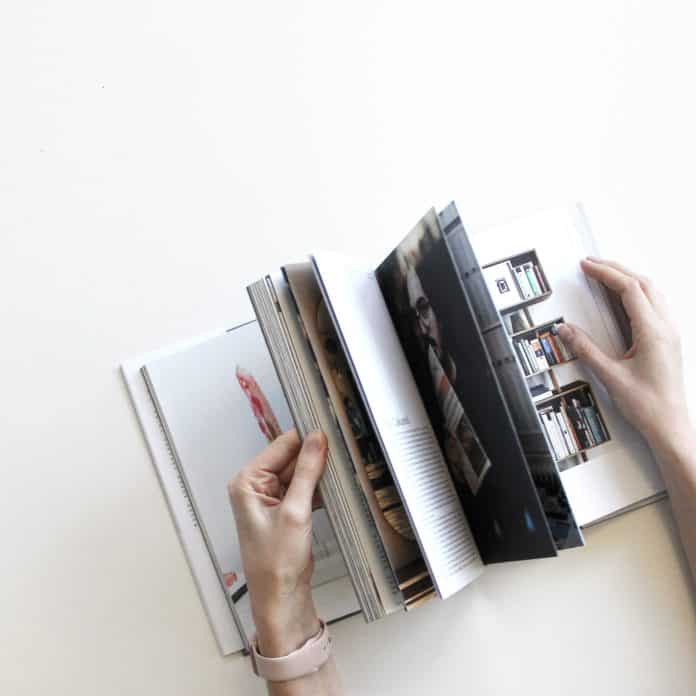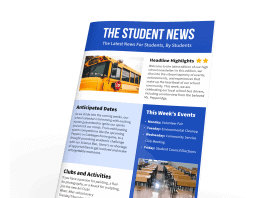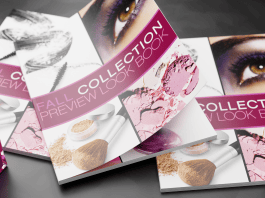Last updated on June 21st, 2024 at 01:28 pm
Catalogs and lookbooks are essential pieces of print marketing collateral within the fashion industry, but they are not the same thing. In order to have a successful fashion business, you have to strategize how you merchandise your accessories and clothing. This is where catalogs and lookbooks come into play, but what exactly is the difference between a fashion catalog and a lookbook?
What is a catalog?
Let’s talk about catalogs first. The basic definition of a catalog is a “list of items in an arranged order.” You can make a catalog of anything really, for example, a catalog of clothing arranged by type of clothing. Think shirts, pants, shoes, etc. A fashion catalog displays a clothing brand’s entire collection with all pertinent details. The details included are pricing, sizing, materials, measurements, colors available, etc.
What is a lookbook?
In the fashion industry, a lookbook is used as a visual display of a product. The goal of a lookbook is to inspire consumers and attract interest from buyers without the clutter of extra details (such as sizing, measurements, etc.) In lookbooks, items are often grouped by a theme or a color in each section, creating an aesthetic visually appealing experience for your audience. Lookbooks are typically published by season, for example, come fall, all the clothes and accessories you would see in a new lookbook would be geared toward fall weather.
Lookbooks tend to be less wordy and more image heavy. You may see multiple views of the same item to help the viewer imagine themselves wearing it. Rather than pushing a single product, lookbooks are geared toward shopping the whole look instead. You can expect to see the products displayed on a simple background, showing multiple angles and pushing the aesthetic of the product.
Should you use a catalog or a lookbook?
What it really comes down to is the text. A lookbook focuses heavily on imagery and the visual storytelling of the products and includes less wordy details. Catalogs are focused on selling the utility of the items. They showcase how you can use them, where you can use them, and include specific details.
Many different industries, beyond just the fashion industry, can benefit by sending out catalogs. Whether you are in the mechanical industry, home decor, food and beverage, and more. Catalogs are ideal for businesses with a large variety of physical products for sale.
Similarly, many industries can also benefit from lookbooks. Home decor, for example, can benefit very well from lookbooks as they allow them to showcase the feelings behind the products.
Tips for designing a catalog or lookbook
Imagery
Images are arguably the most important aspect of your catalog or lookbook. That being said, there are different goals you will want to keep in mind depending on whether you are photographing for a catalog or a lookbook. If you are photographing for a catalog, you want to capture how the products can be incorporated into your audience’s daily lives. Think lifestyle shots of the products in use. If you are photographing for a lookbook, your goal is to capture the feeling behind the brand and products. How can you capture the feeling of luxury for a high-end fashion brand?
Pro tip: make sure any images you use are at least 300dpi to ensure high-quality images in your final printed product.
Details
Similar to images, what you are designing for will dictate what and how much you can include for text. If you are designing for a catalog, you will want to include much more detail than you would for a lookbook. A catalog typically includes information such as pricing, sizes, measurements, etc. The key here is to include what you need but to keep it balanced with images. For a lookbook, you are much more limited because the focus of a lookbook is the images. You can include text for the title of the collection, but you should not include things such as pricing and product descriptions. Those are details best suited for a catalog.
The design
Regardless if you are designing for a catalog or a lookbook, you will want to keep a few things in mind when it comes to the layout of your content.
First off, you want to make sure you balance the ratio of text to images. A catalog will be more text-heavy than a lookbook, but neither should be overly text heavy in general. To help keep balance, keep your white space in mind. White space is the blank area between images and text and around the entire page. White space can help keep your catalog or lookbook from being too cluttered.
The final aspect to keep in mind is the flow. Navigating through your catalog or lookbook should be intuitive and easy for your audience to follow. Include a table of contents, page numbers, and group similar products together so that your audience can find what they are looking for easily. If it is hard to navigate, it will likely be tossed.
Binding type
There are two very common binding types that work great for catalogs and lookbooks and those are Perfect Bound and Saddle Stitch.
Saddle Stitch binding is a method where your booklet is printed on both sides of the paper, collated in page number order, folded in half, and then stapled through the fold. It’s an affordable option that is great for booklets that are 64 pages or less.
Perfect bound is when your booklet is printed on single sheets, collated in page number order, and then gathered into a book block. Then, the spine edge is ground down and a softcover is placed over the book and adhered using a strong PUR glue. This creates a polished and professional-looking square spine. Perfect bound is ideal for books that have a larger page count of 30-200 pages.
Print with Printivity
If you are ready to get your catalog or lookbook printed, or if you have any questions about the process, don’t hesitate to reach out to one of our experts at 1-877-649-5463. We are here to help every step of the way, whether this is your first order or you are a seasoned printer.





